Gas Engines
Smooth operation for over 90,000 hours
28 August 2024
04 December 2014
Changing European stationary gas engine market demands advanced lubricants
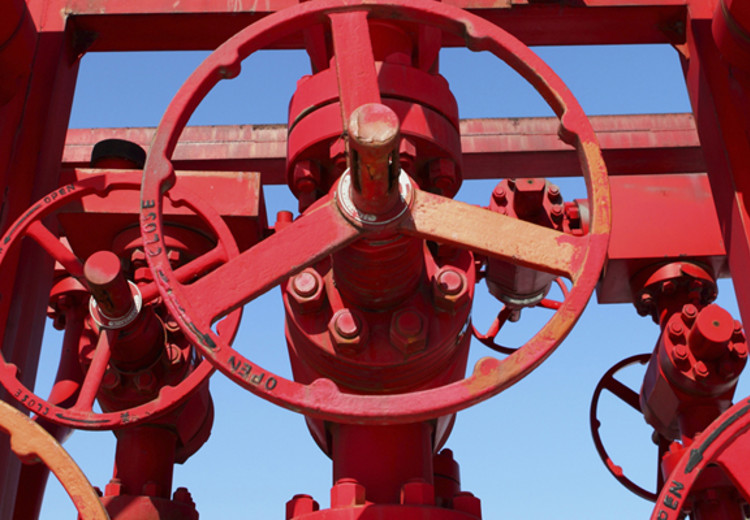
The recent interest in the use of gas in mobile applications may have temporarily overshadowed the traditional stationary gas engine market. But Insight reveals how the evolution of these workhorse gas engines is presenting lubricant formulation challenges that require our continued attention.
Stationary gas engines are very different from conventional diesel or petrol engines. Not only, as their name implies, do they stay in one place and run on a very different fuel but they can also be very large – some weighing more than 80t. But, it’s not just these fairly obvious factors that make them different, they also have higher combustion temperatures, higher engine loads and very different engine operation – all of which impact their lubrication requirements.
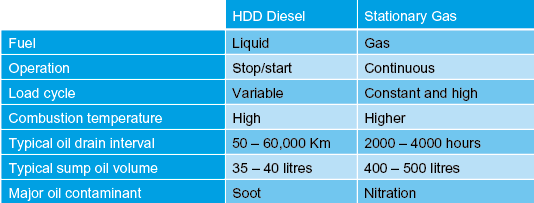
Stationary gas engines are very different from conventional heavy-duty diesel engines
Gas engines are predominantly used in the compression and transportation of gas in pipeline systems or for combined heat and power (CHP) generation. In pipeline and some CHP applications the engines run on ‘clean’ natural gas, while in other CHP applications the engines can use landfill or biogas.
While natural gas contains pure methane and clean-burning hydrocarbons, landfill gas and biogas contain significant levels of CO2, sulphur and chlorine, which can form acids during combustion.
In addition, landfill gas can introduce siloxanes, which may form hard silica deposits on the cylinder heads and valves, potentially leading to damage.
Gas engine oils have a number of important functions to perform. Not only must they protect the engine by preventing deposits, corrosion and wear, but also they must minimise engine downtime and continue to deliver protection over extended oil drain intervals.
If you imagine running a car engine flat out for ten years at full load without changing the oil – that is equivalent to what we expect from a gas engine oil.
Before the growth of the North American shale gas market, Europe had been the fastest growing region for large stationary gas engines. Although it may no longer take the top spot, there is still growth in the market – particularly for engines running on biogas in North Europe and landfill gas in Southern Europe. This growth is attracting new participants and encouraging existing OEMs to increase their large gas engine product portfolio.
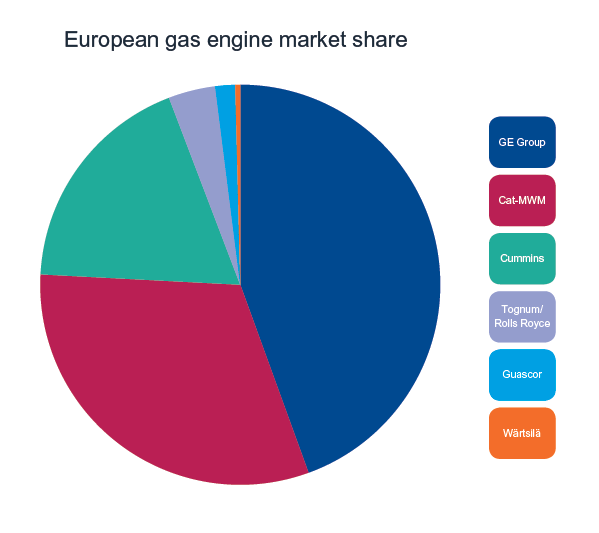
One of the largest gas engine OEMs in Europe told Infineum that they are introducing new engine types with high power output to meet their customers' requirements.
As well as high power output, today's gas engine customers are looking for low operating costs over the lifetime of the engine and expect their engine to stay reliably in service for long periods of time. In addition, they demand long oil drain intervals to reduce both engine downtime and maintenance costs.
OEMs have introduced product enhancements to reduce oil volumes and oil consumption and lengthen oil drain intervals to deliver substantial savings over the life of the engine.
Gas engine oils (GEO) are a careful balance of base oil, which in Europe is moving from Group I to Group II, and additives. Unlike engine oils formulated for heavy and light-duty applications, GEO approvals are not driven by industry specifications, but by field performance.
The increased use of more severe gaseous fuels combined with OEM and consumer performance requirements pose significant challenges to the GEO formulator.
The biggest formulation challenge is striking the correct sulphated ash balance in the finished oil. Ash, which is predominately derived from detergent and antiwear additives, is needed since it forms a protective layer over the valves. However, too much ash and valve torching or guttering can occur - where a channel is cut across the valve face - which leads to loss of power. On the other hand, too little ash can cause valve recession – where the sealing face of the valve is damaged, which again results in loss of engine power. Both, or either of these conditions, require additional expense or repair/downtime of the engine.
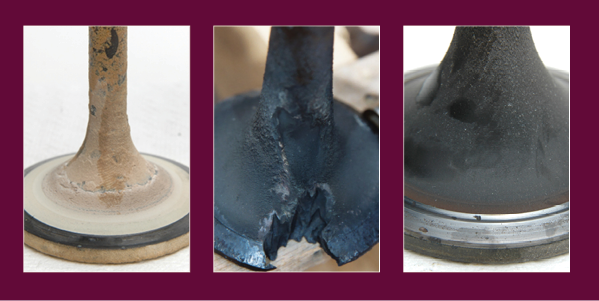
Striking the correct sulphated ash balance in the finished oil is essential to ensure valve protection. From left to right pictures of a good valve, a torched valve and a recessed valve
Stationary gas engines have a unique combustion chemistry – exhibiting both high nitration and oxidation mechanisms – this presents a real challenge for the GEO formulator.
Nitration occurs due to the reaction of the oil with the NOx that is created during combustion. Nitration products in the oil can reduce the oil’s viscosity and increase both acidity and insolubles (e.g. sludge and varnish). In addition, nitration promotes the generation of radical species to feed the oxidation cycle.
If nitration and oxidation are not adequately controlled oil drain intervals can be negatively impacted.
Recent trends in engine design have focused on improving power output and efficiency while reducing emissions of NOx and methane. OEMs have increased compression ratios and turbocharger pressures, improved combustion control and valve timing – all the while reducing oil volumes and consumption.
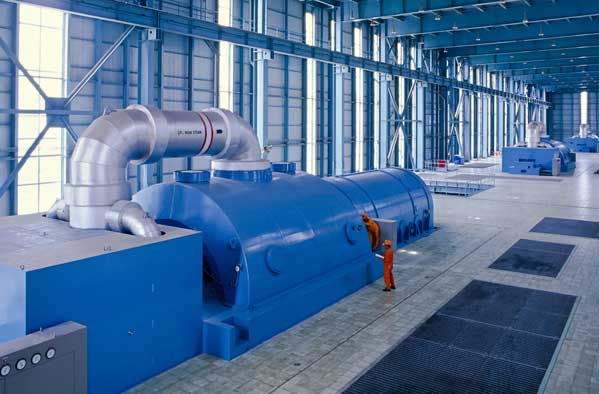
Higher efficiency engines need lubricants that can deliver good temperature and pressure stability and provide engine cleanliness over long drain intervals
Changes in piston design, which have put the lubricant closer to the combustion zone, along with the use higher power engines have increased oil oxidation. This has an impact on other used oil parameters – for example total base number (TBN) can be rapidly depleted, which reduces the lubricant’s ability to neutralise combustion acids. This is becoming a significant issue, especially as the use of landfill and biogas increases, because these severe fuels make the environment for the engine much more acidic and damaging.
Advanced GEOs are now required to meet a number of challenging and sometimes conflicting requirements. In our view GEOs need to deliver:
The unique chemistry and operating conditions of stationary gas engines mean conventional crankcase lubricants cannot deliver sufficient engine protection.
Today’s GEOs must be able to deal with the harsh conditions in the engine, whilst delivering the required level of protection, all the while offering the drain intervals demanded by end users.
And, as different and more challenging gas sources are utilised, it is increasingly important for gas engine oils to be carefully formulated for each type of service.
The formulation of advanced gas engine oils is extremely complex. Yes, the detergent, dispersant, antiwear and antioxidant components must be carefully selected based upon their individual performance attributes. But, the formulator must also fully understand the positive and negative interactions that these components can have on each other. In addition, the impact of formulating in different base stocks must be taken into consideration to ensure that the final lubricant is harms free and maintains engine performance throughout its lifetime in the engine.
Sign up to receive monthly updates via email